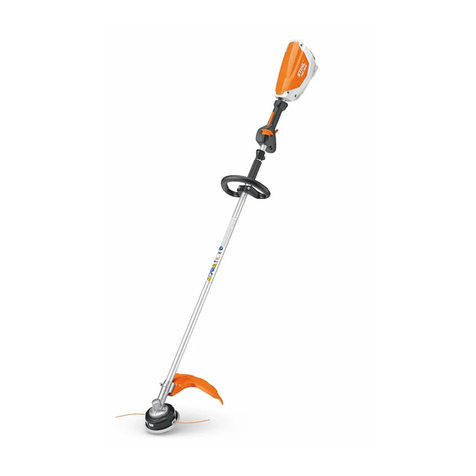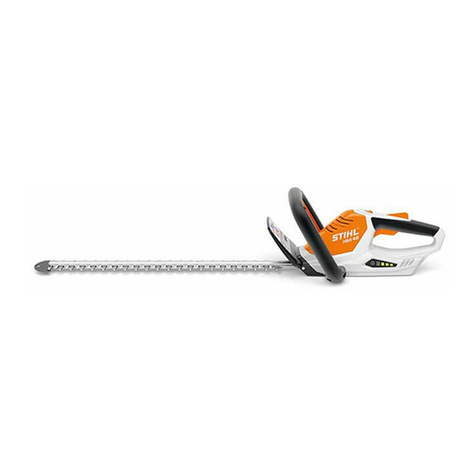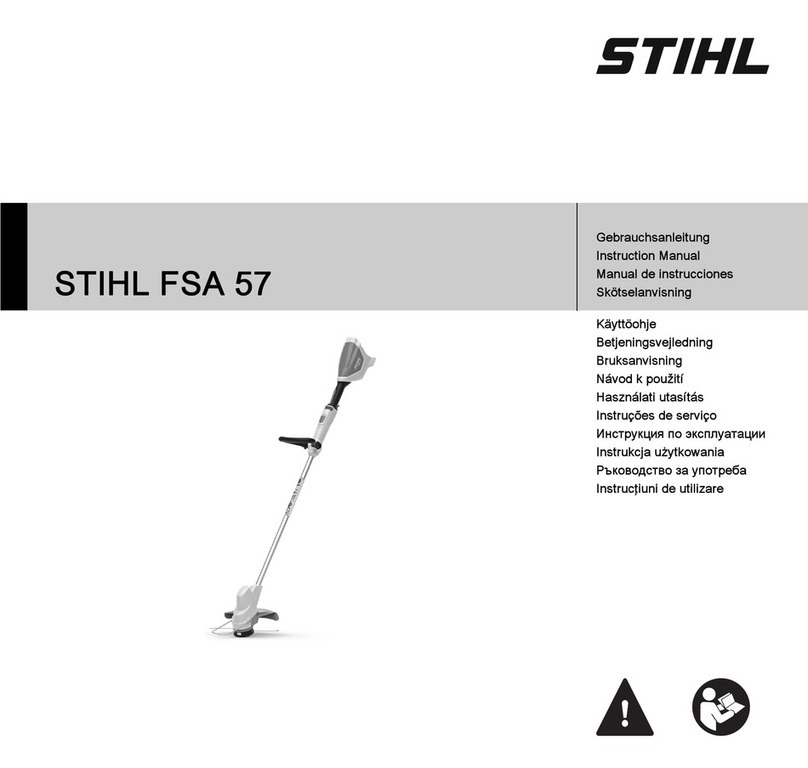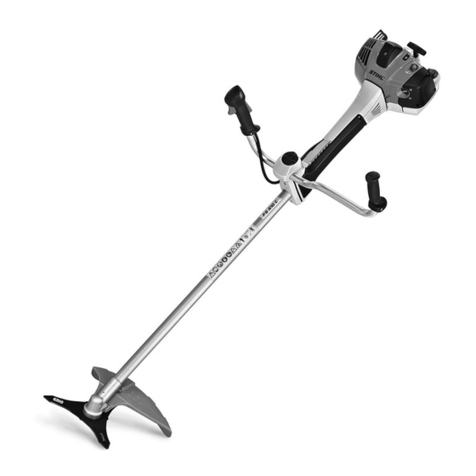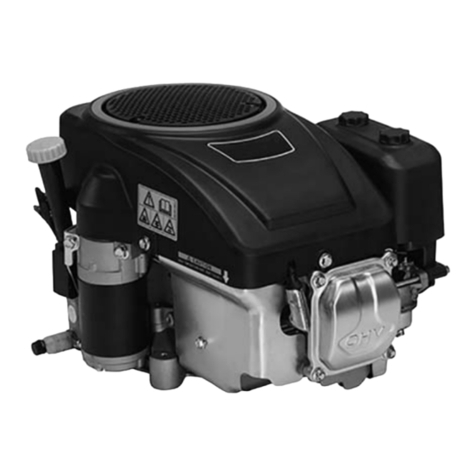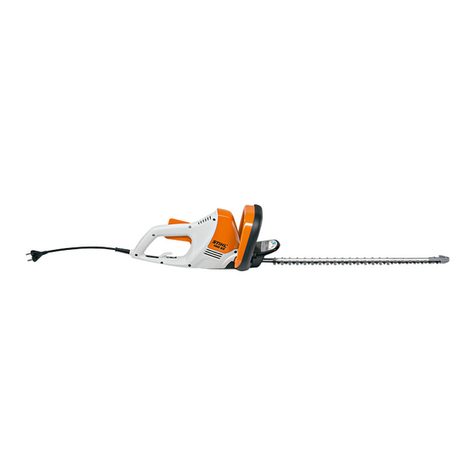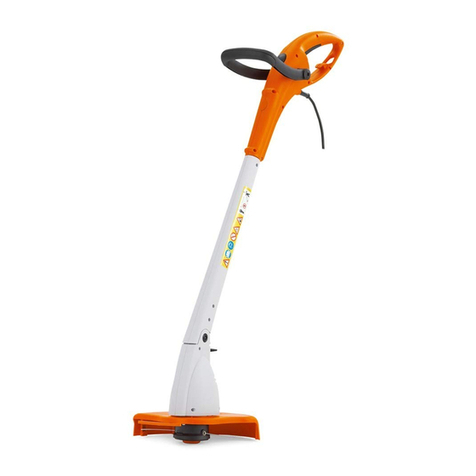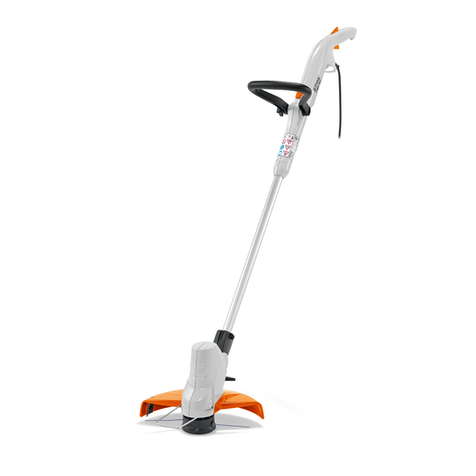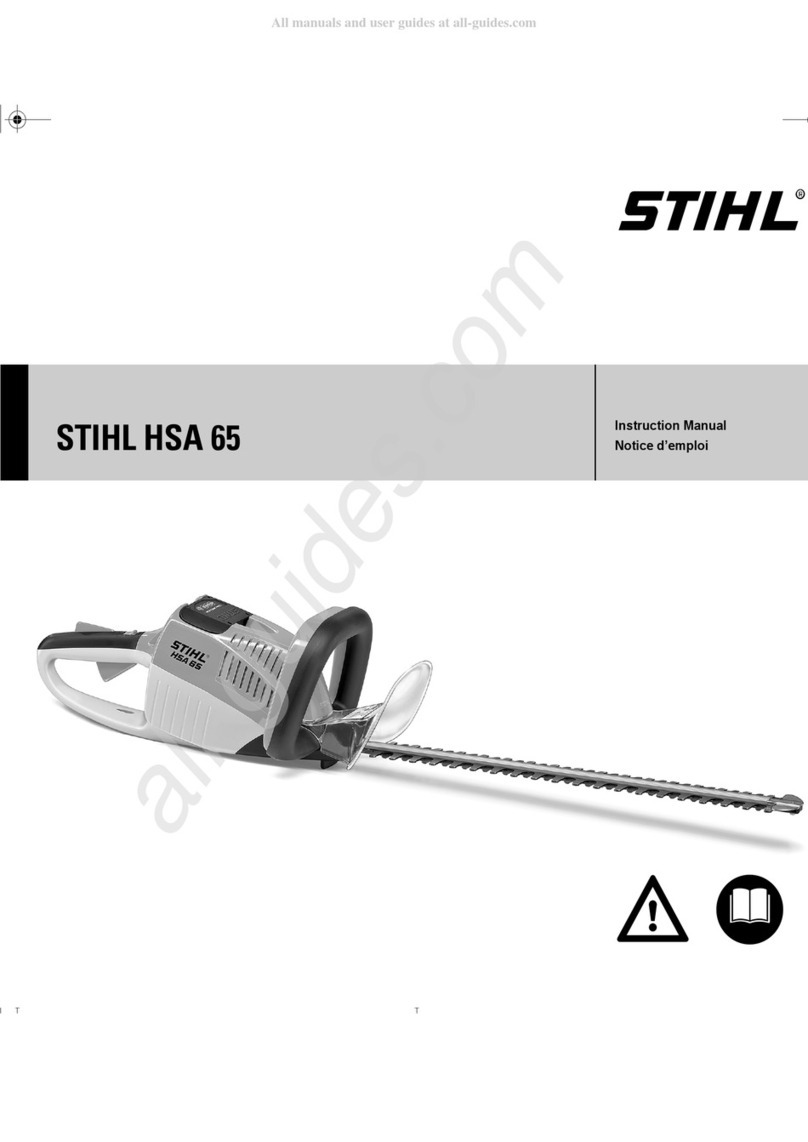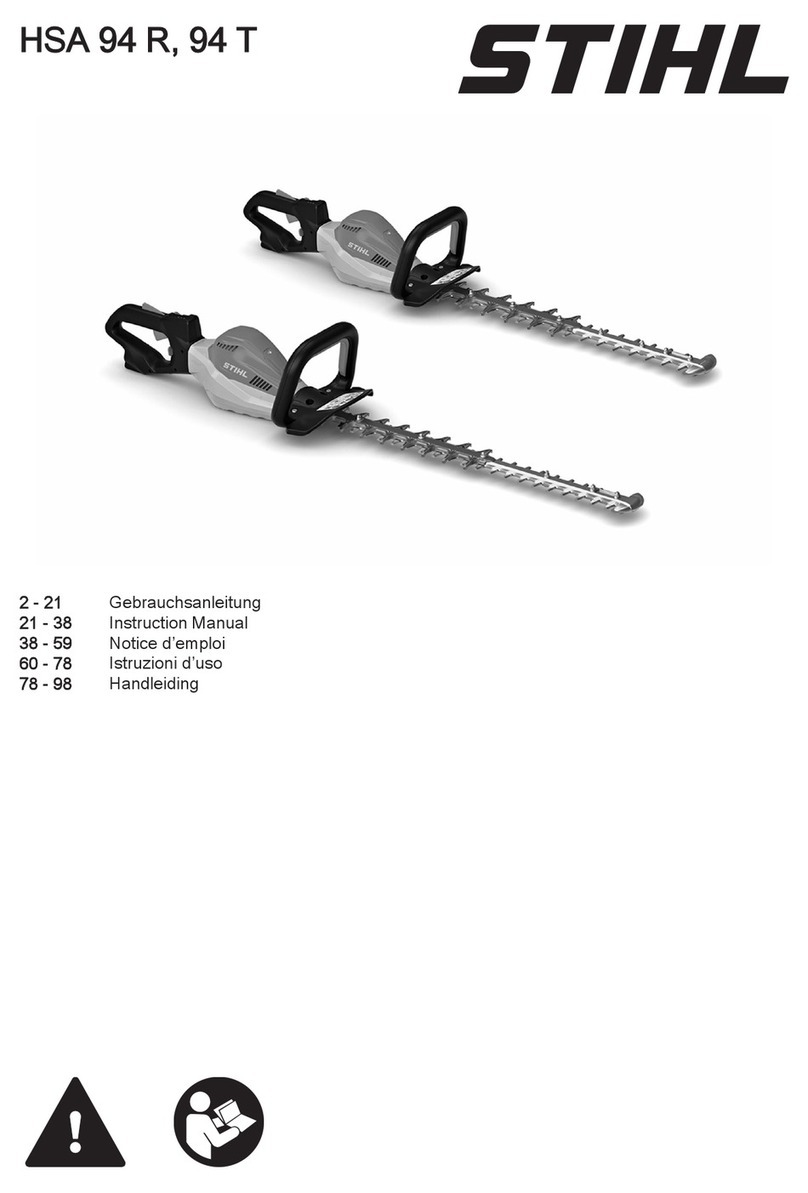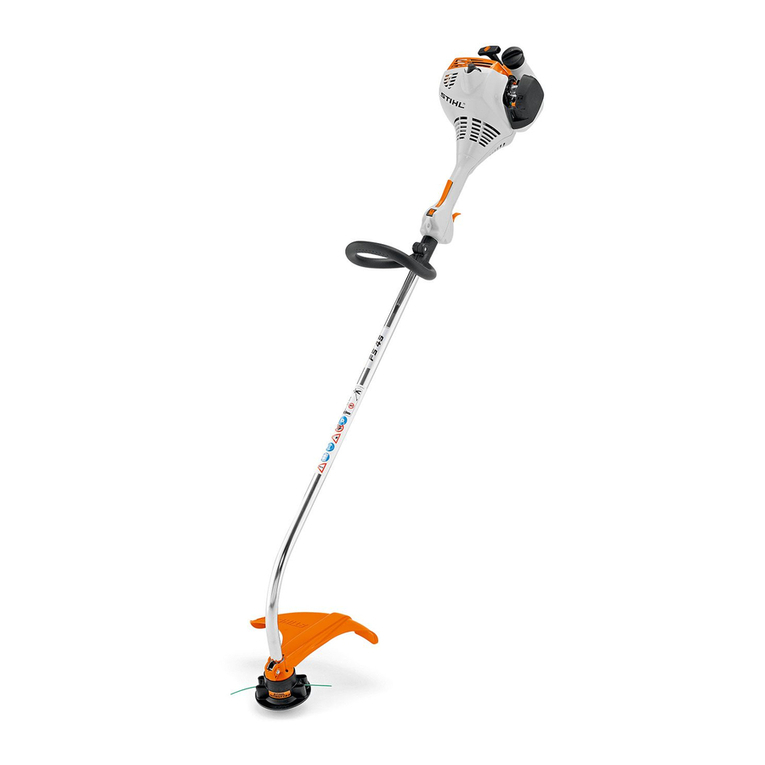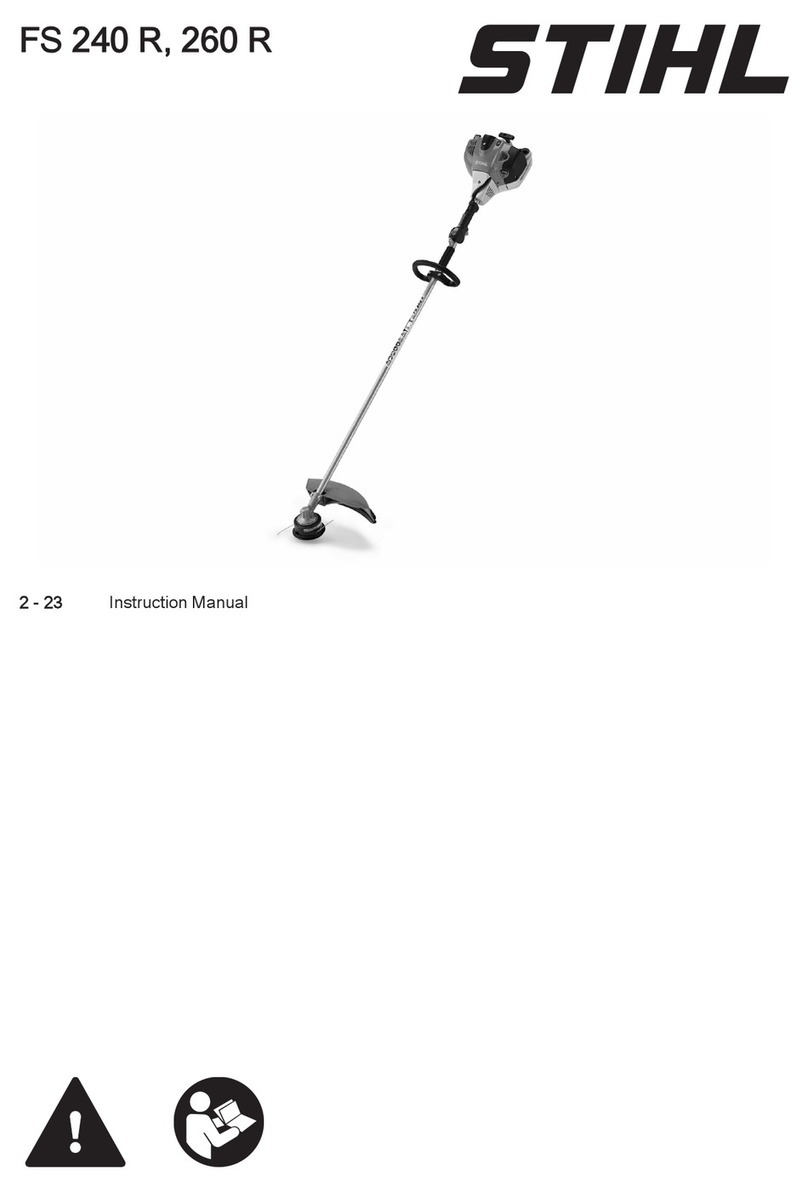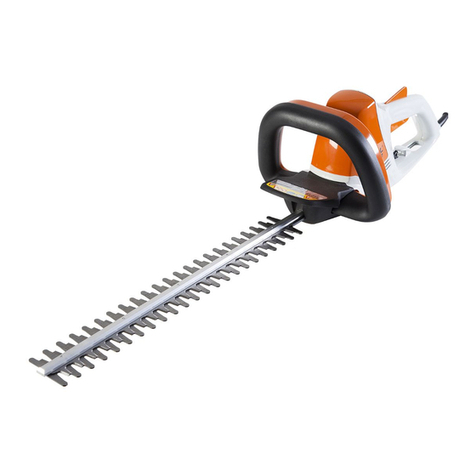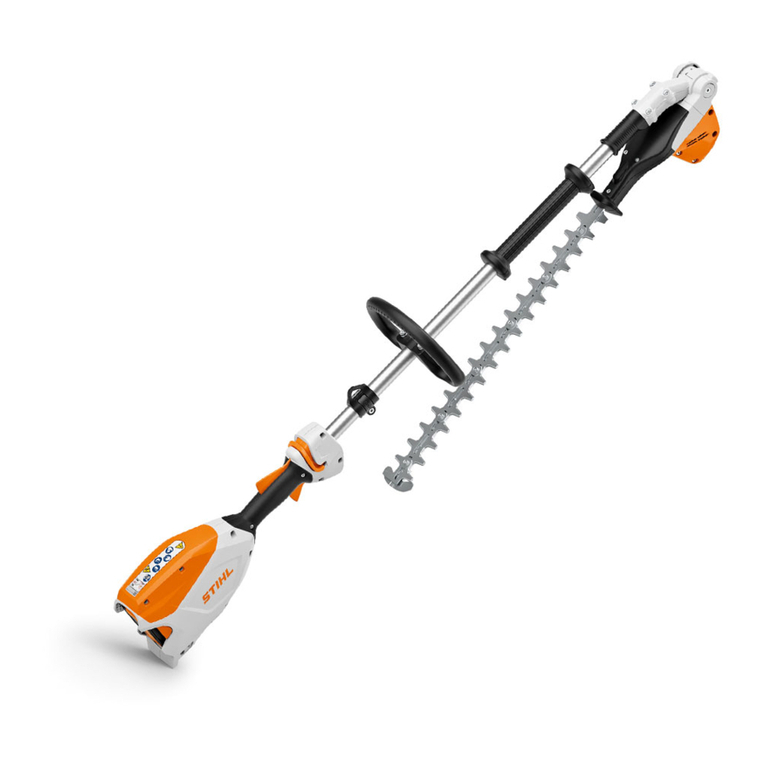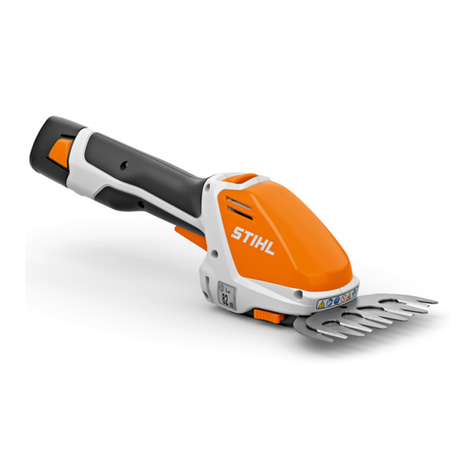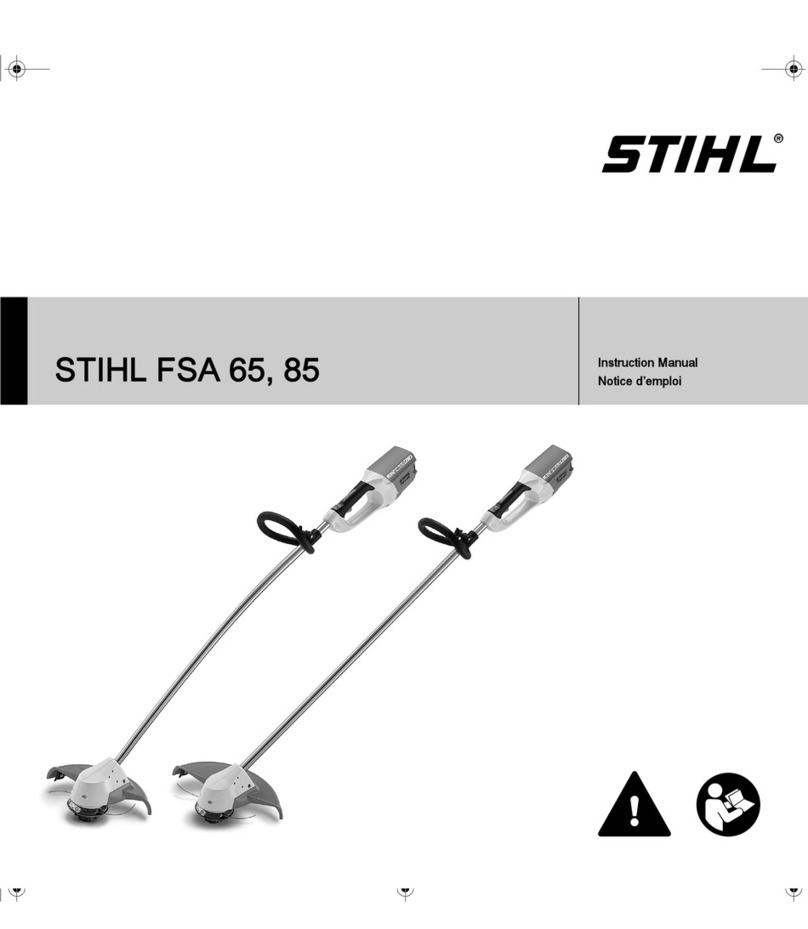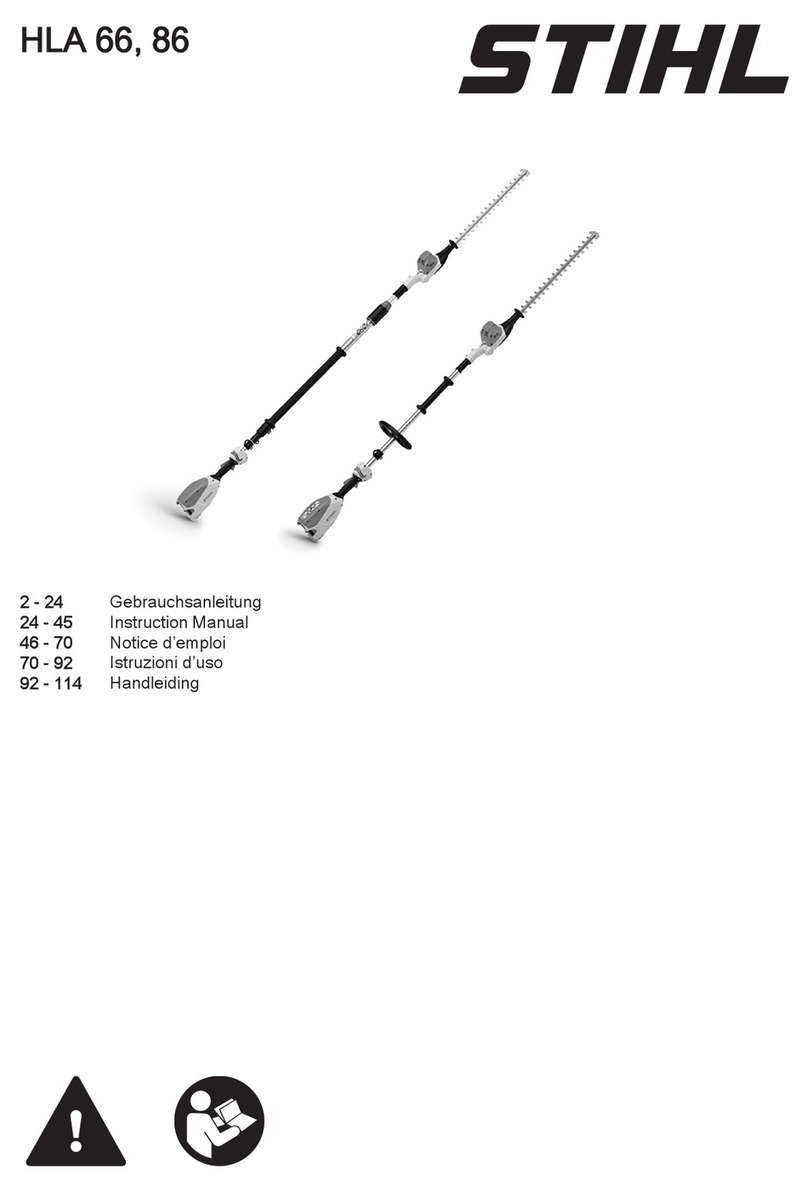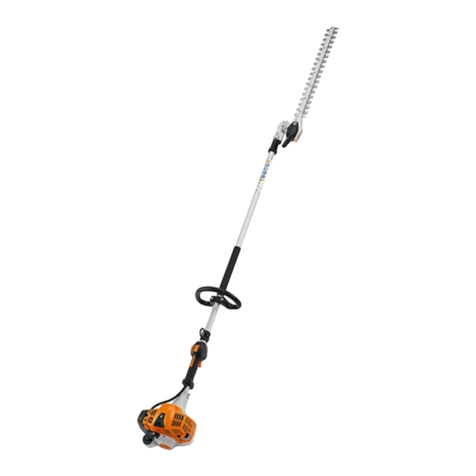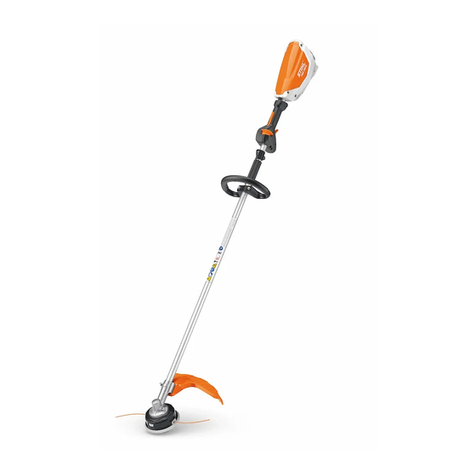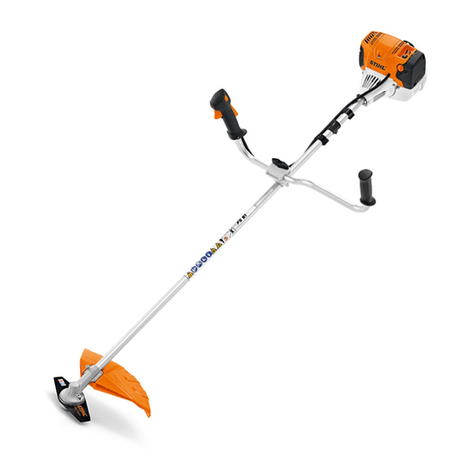HL 90 K
English
6
To reduce the risk of fire, do not
smoke while operating or standing near
your power tool. Note that combustible
fuel vapor may escape from the fuel
system.
The dusts, vapor and smoke produced
during operation may be dangerous to
health. If the work area is very dusty or
smoky, wear a respirator.
If your power tool is subjected to
unusually high loads for which it was not
designed (e.g. heavy impact or a fall),
always check that it is in good condition
before continuing work – see also
"Before Starting". Check the fuel system
in particular for leaks and make sure the
safety devices are working properly. Do
not continue operating your power tool if
it is damaged. In case of doubt, have the
machine checked by your servicing
dealer.
Do not operate your power tool in the
starting throttle position – engine speed
cannot be controlled in this position.
Inspect the hedge and work area to
avoid damaging the cutting blades:
–Remove stones, rocks, pieces of
metal and other solid objects.
–When working close to the ground,
make sure that no sand, grit or
stones get between the blades.
–Take particular care when cutting
hedges next to or against wire
fences.
To avoid the risk of electrocution, do
not touch electric power lines – never cut
through electric power lines.
Opening the throttle while the blades are
blocked increases the load and reduces
engine speed. The clutch then slips
continuously and this causes
overheating and damage to important
components (e.g. clutch, polymer
housing components) – and this can
increase the risk of injury from the
blades moving while the engine is idling.
If the hedge is very dusty or dirty, spray
the blades with STIHL resin solvent from
time to time during cutting. This helps
reduce blade friction as well as the
aggressive effects of sap and the build-
up of dirt particles.
Before leaving the power tool
unattended: Shut off the engine.
Check the cutting blades at regular short
intervals during operation or
immediately if there is a noticeable
change in cutting behavior:
–Stopping the engine
–Wait until the cutting blades have
come to a complete standstill.
–Check condition and tightness, look
for cracks.
–Check sharpness.
To reduce the risk of fire, always clean
plant residue, chips, leaves and excess
lubricant off the engine and muffler.
After Finishing Work
Always clean dust and dirt off the
machine – do not use any grease
solvents for this purpose.
Spray the blades with STIHL resin
solvent. Run the motor briefly so that the
solvent is evenly distributed.
Vibrations
Prolonged use of the power tool may
result in vibration-induced circulation
problems in the hands (whitefinger
disease).
No general recommendation can be
given for the length of usage because it
depends on several factors.
The period of usage is prolonged by:
–Hand protection (wearing warm
gloves)
–Work breaks
The period of usage is shortened by:
–Any personal tendency to suffer
from poor circulation (symptoms:
frequently cold fingers, tingling
sensations).
–Low outside temperatures.
–The force with which the handles
are held (a tight grip restricts
circulation).
Continual and regular users should
monitor closely the condition of their
hands and fingers. If any of the above
The gearbox becomes
hot during operation. To
reduce the risk of burn
injury, do not touch the
gearbox housing.
Do not touch the cutting
blades while the engine is
running. If the cutting
blades become jammed
by thick branches or
other obstructions, switch
off the engine immedi-
ately before attempting to
free the blades.
